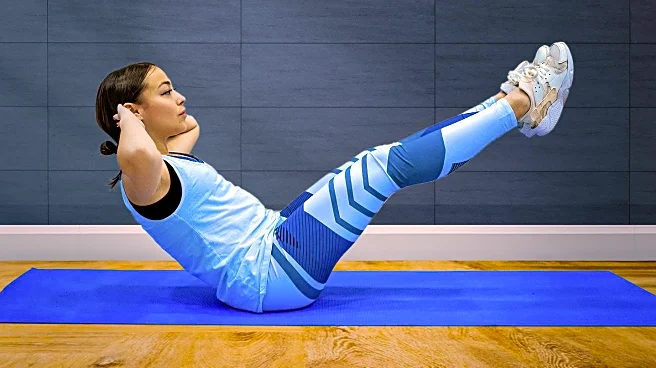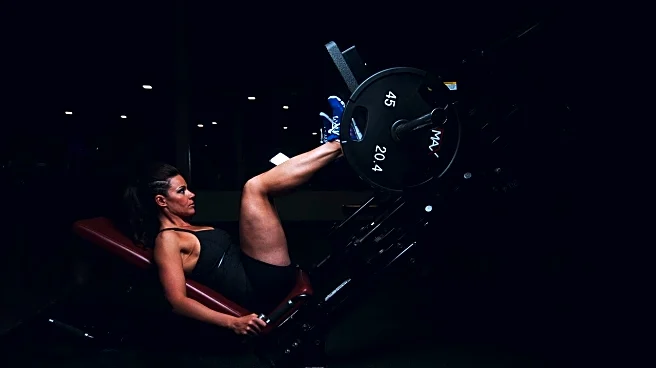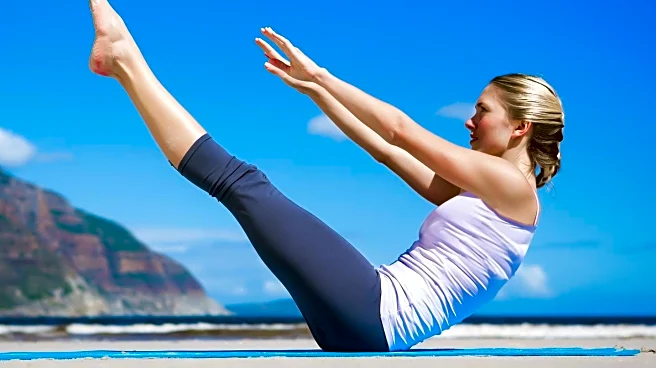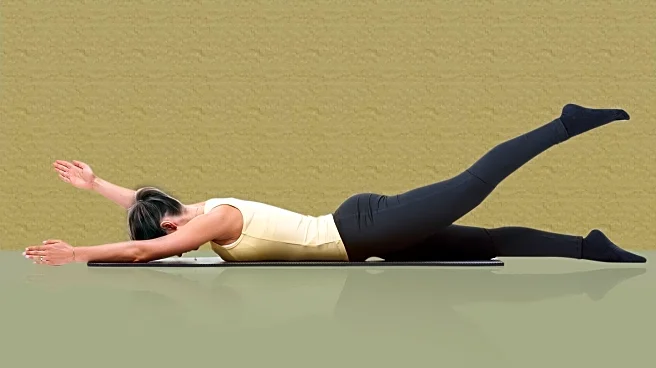What's Happening?
A fitness enthusiast, who began her journey with a love-hate relationship with traditional workouts, has developed a unique workout method that combines Pilates and strength training. At 71, she attributes her strength and vitality to this method, which she calls the Hilliard Studio Method. This program focuses on compound exercises that target multiple muscle groups simultaneously, using 8- to 10-pound dumbbells. The method evolved from her personal experience of plateauing in Pilates and the realization of the importance of resistance training for muscle building and bone density maintenance, especially as one ages. Her classes are designed to be dynamic and engaging, ensuring that participants never experience the same workout twice.
Why It's Important?
This development is significant as it highlights the growing trend of personalized fitness programs that cater to the aging population. As more individuals seek to maintain their health and independence into their later years, methods like the Hilliard Studio Method offer a sustainable approach to fitness. The emphasis on compound exercises not only maximizes workout efficiency but also supports joint stability and muscle recruitment, which are crucial for aging bodies. This approach could influence the fitness industry to create more inclusive and adaptable workout programs that address the needs of older adults, potentially reducing healthcare costs associated with age-related muscle and bone deterioration.
What's Next?
The success of the Hilliard Studio Method may inspire other fitness professionals to develop similar programs that cater to specific demographics, particularly older adults. As the population continues to age, there is likely to be an increased demand for fitness solutions that promote longevity and quality of life. This could lead to more research and innovation in the field of geriatric fitness, as well as collaborations between fitness experts and healthcare providers to create comprehensive wellness plans for seniors.
Beyond the Headlines
The rise of such personalized fitness programs also raises questions about accessibility and affordability. While these programs offer significant benefits, they may not be accessible to all due to cost or location. This highlights the need for broader initiatives to make effective fitness solutions available to a wider audience, potentially through community centers or public health programs. Additionally, the focus on strength training and functional fitness could shift cultural perceptions of aging, promoting a more active and empowered view of senior life.








